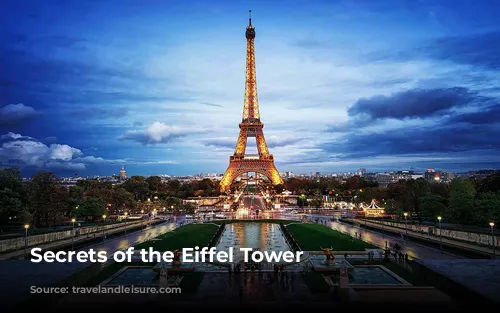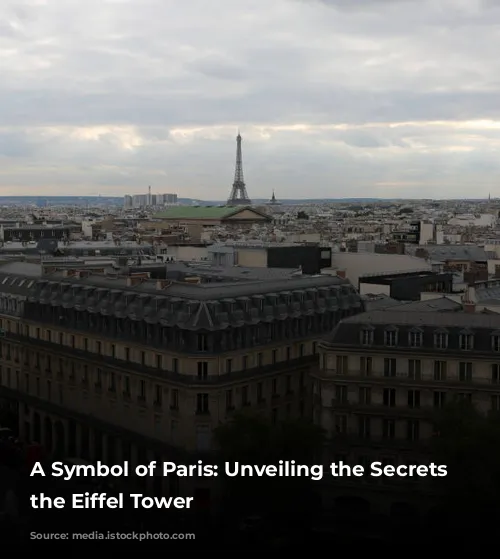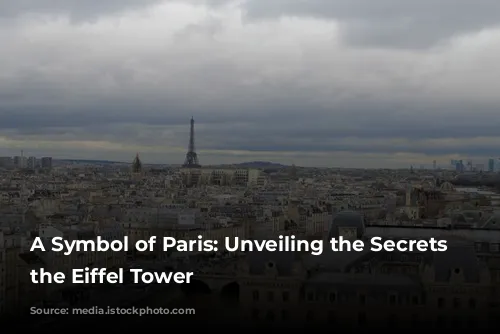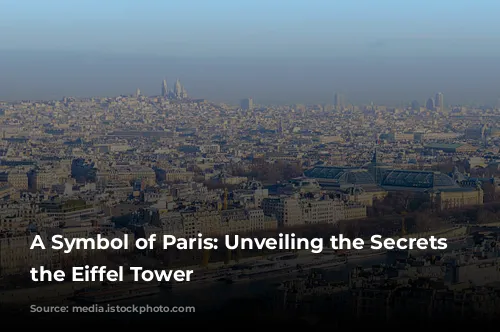The Eiffel Tower, or “La Tour Eiffel”, is more than just a beautiful landmark; it’s a testament to French innovation and a source of endless fascination. This iconic structure has captured hearts around the world and continues to be one of the most popular tourist destinations in Paris. But behind its towering silhouette, there are fascinating stories and unexpected facts waiting to be discovered.

From Controversial Design to Global Icon
The Eiffel Tower was born from an ambitious vision: to celebrate the 100th anniversary of the French Revolution and showcase the country’s industrial might at the 1889 World’s Fair. Gustave Eiffel, a renowned civil engineer, was entrusted with this monumental project, and his team worked tirelessly to complete the tower in a remarkably short timeframe – just two years, two months, and five days.
This feat of engineering was met with mixed reactions. While the tower’s construction was a marvel of speed and precision, not everyone embraced its towering presence. A group of influential artists and intellectuals, including Guy de Maupassant and Alexandre Dumas, condemned the tower’s design, calling it “a gigantic black factory chimney” and “a stupefying folly.” They feared that the tower’s imposing silhouette would overshadow the beauty of Paris’s other architectural treasures.
Despite the criticism, the Eiffel Tower triumphantly stood its ground. Its popularity during the World’s Fair was undeniable, attracting over two million visitors. Since then, millions more have followed, drawn to its charm and the captivating views it offers of the City of Lights.

More Than Meets the Eye
The Eiffel Tower is a treasure trove of secrets and surprises. It’s not just a grand monument; it’s a living testament to history, science, and art.
One of the most intriguing aspects of the tower is its connection to science. Eiffel, a passionate scientist, turned the tower into his own personal laboratory, setting up a meteorology lab on the third floor. He conducted experiments in physics and aerodynamics and even constructed a wind tunnel at the tower’s base. This dedication to scientific exploration has ensured that the Eiffel Tower is not only a monument to engineering but also a reminder of the importance of scientific discovery.
The Eiffel Tower also boasts a surprising history of unconventional occupants. The tower has housed a post office, a radio station, a theater, and even served as an office for the French newspaper Le Figaro.

Hidden Details and Enduring Legacy
Even the smallest details of the Eiffel Tower are packed with significance. The names of 72 prominent French scientists and engineers are etched into the iron surrounding the tower’s first floor. This tribute serves as a reminder of the contributions of these individuals to the world of science and technology.
Despite its enduring legacy, the Eiffel Tower has had its fair share of near misses. During World War II, the Nazis planned to demolish the tower, but Allied troops intervened just in time to save this iconic landmark.
The Eiffel Tower’s legacy extends far beyond its physical presence. It serves as a symbol of Paris, a testament to French ingenuity, and a source of inspiration for generations to come. So, the next time you find yourself gazing up at this magnificent structure, remember that its story is one of triumphs, controversies, and enduring beauty – a story that continues to captivate the world.










